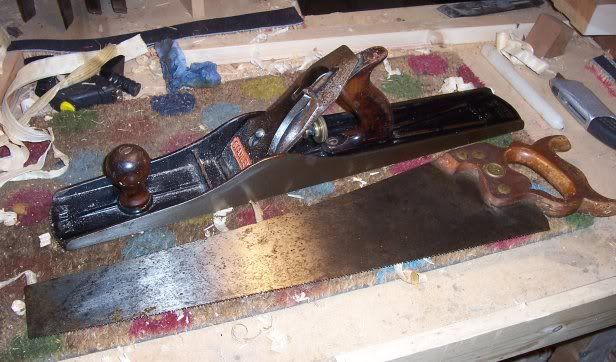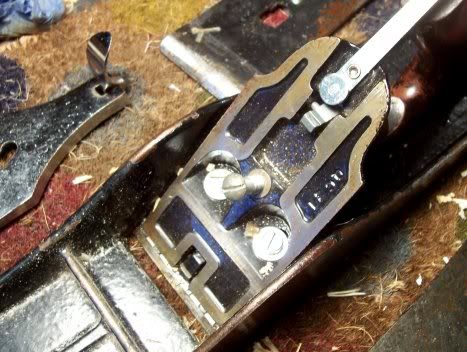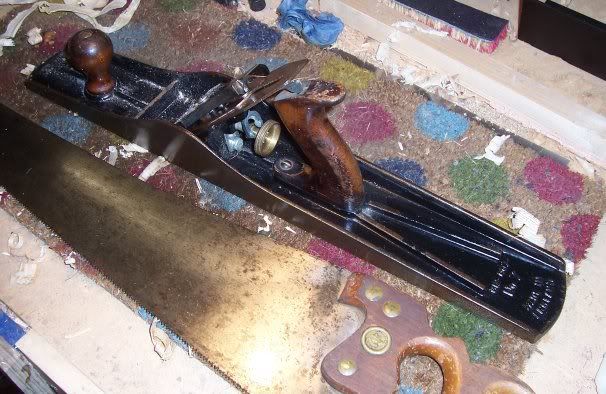CroppyBoy1798
Established Member
Picked up a Stanley jointer on Sunday at a market, hadnt been at the particular car boot in a long long time and went specifically with the hop of picking up such a plane, so, all in all not a bad day! 
Anyway, its a Stanley Bailey No7, I'm just trying to date it however, its a little confusing! It 'looks' to have a 'bit' of age to it, suggested by the most part by the grips which 'look' old and well smoothed and softened by use, however, the rest of the plane doesnt look or feel terribly old, I reckon about 10-20 years old, if that. Stanley still make the No7's, right?

Anyway, payed €60, about £50, which is a pretty resonable price for a jointer I reckon, he wasnt going no lower, got him to throw in the saw to seal the deal! A nice compact 10TPI crosscut with a 'Warranted Superior' badge unlike the ones I've seen this one hasnt got an eagle but a crest with latin on it :? All teeth present and she's been cleaned and resharpened since I got it! 8)
A nice compact 10TPI crosscut with a 'Warranted Superior' badge unlike the ones I've seen this one hasnt got an eagle but a crest with latin on it :? All teeth present and she's been cleaned and resharpened since I got it! 8)
Anyway, its a Stanley Bailey No7, I'm just trying to date it however, its a little confusing! It 'looks' to have a 'bit' of age to it, suggested by the most part by the grips which 'look' old and well smoothed and softened by use, however, the rest of the plane doesnt look or feel terribly old, I reckon about 10-20 years old, if that. Stanley still make the No7's, right?

Anyway, payed €60, about £50, which is a pretty resonable price for a jointer I reckon, he wasnt going no lower, got him to throw in the saw to seal the deal!






